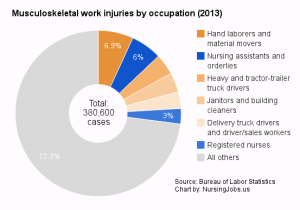Stephanie Packer was 29 when she found out she has a terminal lung disease.
It’s the same age as Brittany Maynard, who last year was diagnosed with terminal brain cancer. Maynard, of northern California, opted to end her life via physician-assisted suicide in Oregon last fall. Maynard’s quest for control over the end of her life continues to galvanize the “aid-in-dying” movement nationwide, with legislation pending in California and a dozen other states.
But unlike Maynard, Packer says physician-assisted suicide will never be an option for her.
“Wanting the pain to stop, wanting the humiliating side effects to go away – that’s absolutely natural,” Packer says. “I absolutely have been there, and I still get there some days. But I don’t get to that point of wanting to end it all, because I have been given the tools to understand that today is a horrible day, but tomorrow doesn’t have to be.”
A recent spring afternoon in Packer’s kitchen is a good day, as she prepares lunch with her four children.
“Do you want to help?” she asks the eager crowd of siblings gathered tightly around her at the stovetop.
“Yeah!” yells 5-year-old Savannah.
“I do!” says Jacob, 8.
Managing four kids as each vies for the chance to help make chicken salad sandwiches can be trying. But for Packer, these are the moments she cherishes.
Diagnosis and pain
In 2012, after suffering a series of debilitating lung infections, she went to a doctor who diagnosed her with scleroderma. The autoimmune disease causes hardening of the skin and, in about a third of cases, other organs. The doctor told Packer that it had settled in her lungs.
“And I said, ‘OK, what does this mean for me?’” she recalls. “And he said, ‘Well, with this condition…you have about three years left to live.’”
Initially, Packer recalls, the news was just too overwhelming to talk about with anyone –including her husband.
“So we just…carried on,” she says. “And it took us about a month before my husband and I started discussing (the diagnosis). I think we both needed to process it separately and figure out what that really meant.”
Packer, 32, is on oxygen full time and takes a slew of medications.
She says she has been diagnosed with a series of conditions linked to or associated with scleroderma, including the auto-immune disease, lupus, and gastroparesis, a disorder that interferes with proper digestion.
Packer’s various maladies have her in constant, sometimes excruciating pain, she says, noting that she also can’t digest food properly and is always “extremely fatigued.”
Some days are good. Others are consumed by low energy and pain that only sleep can relieve.
“For my kids, I need to be able to control the pain because that’s what concerns them the most,” she adds.
Faith and fear
Packer and her husband Brian, 36, are devout Catholics. They agree with their church that doctors should never hasten death.
“We’re a faith-based family,” he says. “God put us here on earth and only God can take us away. And he has a master plan for us, and if suffering is part of that plan, which it seems to be, then so be it.”
They also believe if the California bill on physician-assisted suicide, SB 128, passes, it would create the potential for abuse. Pressure to end one’s life, they fear, could become a dangerous norm, especially in a world defined by high-cost medical care.
“Death can be beautiful”
Instead of fatal medication, Stephanie says she hopes other terminally ill people consider existing palliative medicine and hospice care.
“Death can be beautiful and peaceful,” she says. “It’s a natural process that should be allowed to happen on its own.”
Stephanie’s illness has also forced the Packers to make significant changes. Brian has traded his full-time job at a lumber company for that of weekend handyman work at the family church. The schedule shift allows him to act as primary caregiver to Stephanie and the children. But the reduction in income forced the family of six to downsize to a two-bedroom apartment it shares with a dog and two pet geckos.
Even so, Brian says, life is good.
“I have four beautiful children. I get to spend so much more time with them than most head of households,” he says. “I get to spend more time with my wife than most husbands do.”
And it’s that kind of support from family, friends and those in her community that Stephanie says keeps her living in gratitude, even as she struggles with the realization that she will not be there to see her children grow up.
“I know eventually that my lungs are going to give out, which will make my heart give out, and I know that’s going to happen sooner than I would like — sooner than my family would like,” she says. “But I’m not making that my focus. My focus is today.”
Stephanie says she is hoping for a double-lung transplant, which could give her a few more years. In the meantime, next month marks three years since her doctor gave her three years to live.
So every day, she says, is a blessing.
This story is part of a reporting partnership that includes Southern California Public Radio, NPR and Kaiser Health News.
Kaiser Health News (KHN) is a national health policy news service. It is an editorially independent program of the Henry J. Kaiser Family Foundation.


![Safe patient handling: Be aware, be safe [quote, chart]](http://nursechronicle.com/wp-content/uploads/2015/05/nursing_jobs_injuries_quote1-300x300.png)
 RoseAnn DeMoro, NNU’s executive director, said that nurses often see the health results that a lifetime of accumulated debt, stress, and poverty cause.
RoseAnn DeMoro, NNU’s executive director, said that nurses often see the health results that a lifetime of accumulated debt, stress, and poverty cause. Some students at the press conference testified to not only the burden of graduating with major student loans, but how difficult it was to not be able to focus on their college studies while they were working two, three, four jobs to make ends meet – even with loans.
Some students at the press conference testified to not only the burden of graduating with major student loans, but how difficult it was to not be able to focus on their college studies while they were working two, three, four jobs to make ends meet – even with loans. Octavia Savage (pictured right), a recent accounting graduate from Bloomfield College, said that she worked day and night to afford college, on top of student loans. “When applying for college, the most important concern about college was, ‘How am I going to pay for school?’” said Savage, who worked in the college library, at UPS, at Sprint, and at Wal-Mart to make ends meet and still graduated with $26,000 in debt. “Students shouldn’t have to drown in debt to get the education they need to survive.”
Octavia Savage (pictured right), a recent accounting graduate from Bloomfield College, said that she worked day and night to afford college, on top of student loans. “When applying for college, the most important concern about college was, ‘How am I going to pay for school?’” said Savage, who worked in the college library, at UPS, at Sprint, and at Wal-Mart to make ends meet and still graduated with $26,000 in debt. “Students shouldn’t have to drown in debt to get the education they need to survive.”
